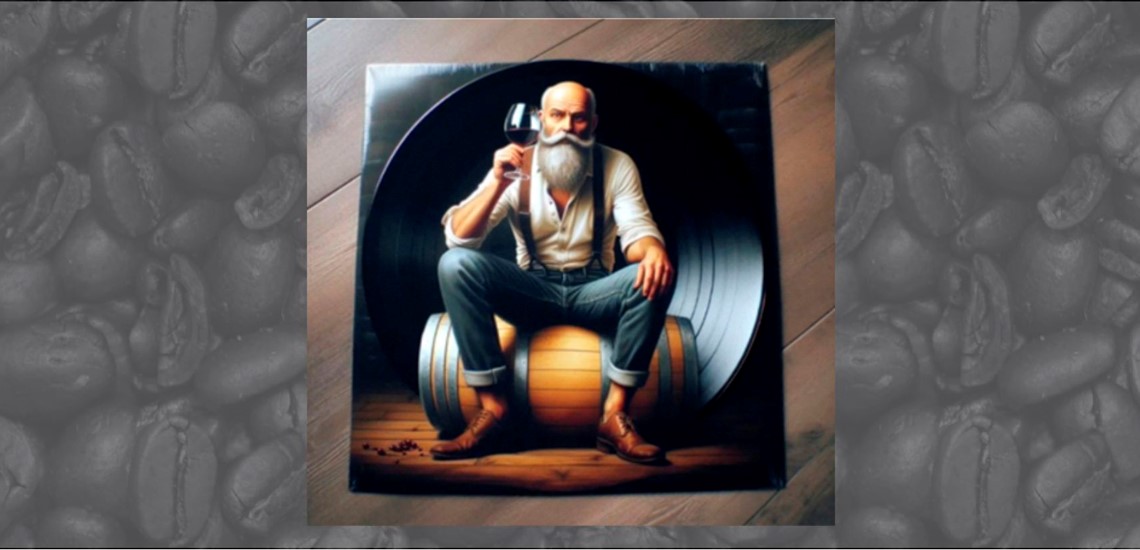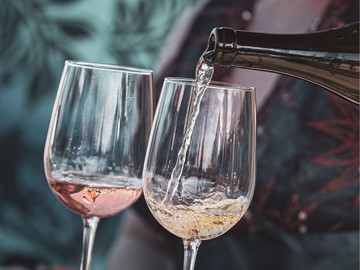Founder, Owner, Winemaker, Hose Dragger, Vine Pruner and amateur blog writer...
Whine World No.1

THOUGHTS ABOUT THE WHINE WORLD
Talk around wine country these days is all about declining sales, low visitation numbers, the overflowing lake of bulk wine and grapes and, of course, the “problem” with Millennials not following up previous generations and purchasing more and more wine. Gen “Z”, the oldest being around 28 years-old, is now in the crosshairs too as marketers are trying to figure out their buying triggers and dream of ways to welcome them to the adult beverage sphere.
As a farmer, winemaker and business owner I have to keep my finger on the pulse and even though I am not a trend follower, I need to listen to, observe and evaluate this new reality. Easier said than done in times when the phrase “A picture is worth a thousand words”, a saying that was the solid truth all my life, is now meaningless. We all know how much fake and manipulated data is out there; Caveat Emptor.
As a winemaker, what drives me most is the joy of the creative process, it keeps me curious, busy and happy and made the past forty years go by in a flash. One of the things I discovered over time is that my winemaking has a “style” and that style is stronger than me. The best analogy I can come up with is that if you print a recipe for a dish and let two chefs prepare it using the same exact ingredients, you will taste two different dishes. And just like I have a style in wine, I have a “style” in thinking and how I approach life. I do not feel the need to define my way of thinking and analyzing it because the nature of “defining” something is to stretch a fence around it. I am comfortable not doing this, I know not everyone is. So as you read the rest of this, remember it comes from a person who decided long ago to just be himself; It is too much work to be someone else.
Back to the Wine World. I asked myself to pause, look at where we are now and think of why and how we got here. Here come my thoughts:
THE No.1 reason we are here is because it is hard to find a shitty wine out there.
I know, you probably think I’m crazy. Hear me out. A mere forty something years ago, when I got bitten by the wine-bug I tried to taste every bottle I could fit into my budget, and often skipped meals so I can save for a special bottle, maybe something that cost $18 or $20! When I began my studies at UC Davis, I started a journal and in it I affixed the label of every wine I tasted (that was before pressure sensitive labels were used and you could neatly soak off any label, dry it and preserve it for future generations).
Every once in a while my entry would say something like: “While the rotten egg notes of this Cabernet transport me to the fun evening I had soaking in the Golan Sulfur Hot-Springs, it quickly progressed and punched me with a cacophony of three-day old sweaty socks interlaced with what fish bait wrapped in newspaper on a hot day smells like. On the other hand, the flavor was akin to munching on a fresh bicycle inner tube smeared with turpentine. Best to serve when your in-laws or an IRS agent come to visit”
We have come a long way in forty years. You may not think it is romantic but the painstaking and boring work of some serious science nerds transformed our understanding of what makes wine taste good and gave us tools to make it so. The most important tool, refrigeration, has revolutionized winemaking beyond anything else. In 1987, while doing a harvest internship at Chateau Lafite in Pauillac we fermented everything in wood tanks and cooled the fermentation (so the yeast don’t kill themselves with the heat produced) by draining fermenting wine into a plastic kiddy pool from which the must was pumped through a stainless steel serpentine contraption cooled by water spray, and back into tank. The next year, the cellar was replaced by shiny new stainless tanks with cooling and warming jackets. Other amazing technologies followed, I’ll only mention a few that had a significant impact: Sterile Filtration, Volatile Acid Removal, Sweet spot dealcoholizing methodology, understanding yeast nutrition, Electrodialysis for stabilizing tartrates, understanding phenolic development, rootstock and clonal development, and of course machine harvesting, sorting tables and other advances in the vineyard and cellar. So now, in 2025 you have to be an idiot to produce a flawed wine. There is no other excuse, even in times of catastrophe like serious smoke taint. Just give science a challenge and it will find a solution.
Thanks to these advances, coupled with amazing marketing that positioned wine as a status symbol, a way to announce to the world that you “Made It” and let’s not forget plain greed - we now have a world where grapevines are planted and flawless (notice I did not see tasty..) wine is produced EVERYWHERE. As of today, there are even four commercial wineries in Alaska!
I am thus not surprised that wine is now suffering a setback. It is transitioning from a unique regional product to a world-wide staple often fashioned by data analysts crunching databases of buying patterns. Be careful what you wish for, right? Small wineries and brands are now endangered species. A good analogy is the story of Hummus. I love a good hummus and I either make it from scratch or order in a deli or restaurant that makes it fresh. Hummus, along with other Mediterranean food, has taken off like a rocketship worldwide. I can’t stand the crap folk buy in those plastic containers in grocery stores. It is not bad tasting, but in my world - it is as related to what real hummus should taste like as a processed turkey frank is to a real Kielbasa. Wine is not different. If you love wine and are willing to make an effort, you will stick to those that have a regional character and are not made by formula. Most people do not have that option, or they are just not that interested, they buy it at the supermarket together with their frozen meals, spongy “bread” and sugary soda.
An interesting thought to end this. Nature is a self-balancing system. It may take years or even eons to correct imbalances, but the universe has all the patience in the world (pun intended). Is this maybe why we now experience the fad of “Natural” wines?
I have nothing against wines with little or no intervention, I have been using science to do just that in my winery, without making any claims of superiority. But the name “Natural Wine” is both elitist and misleading. Moreover - the marketing lingo used by it’s promoters relies on pointing fingers at others (my no.1 red flag BS marker) while making excuses for themselves (“sediment and murkiness are part of the process”). Let’s call these wines what they really are: garage wines with a short shelf life. Once in a while you’ll get lucky and have a fresh one that has not turned yet but most are better kept for when the in-laws come to visit.

Longboard
5 Fitch Street
Open 11 am to 6 pm daily